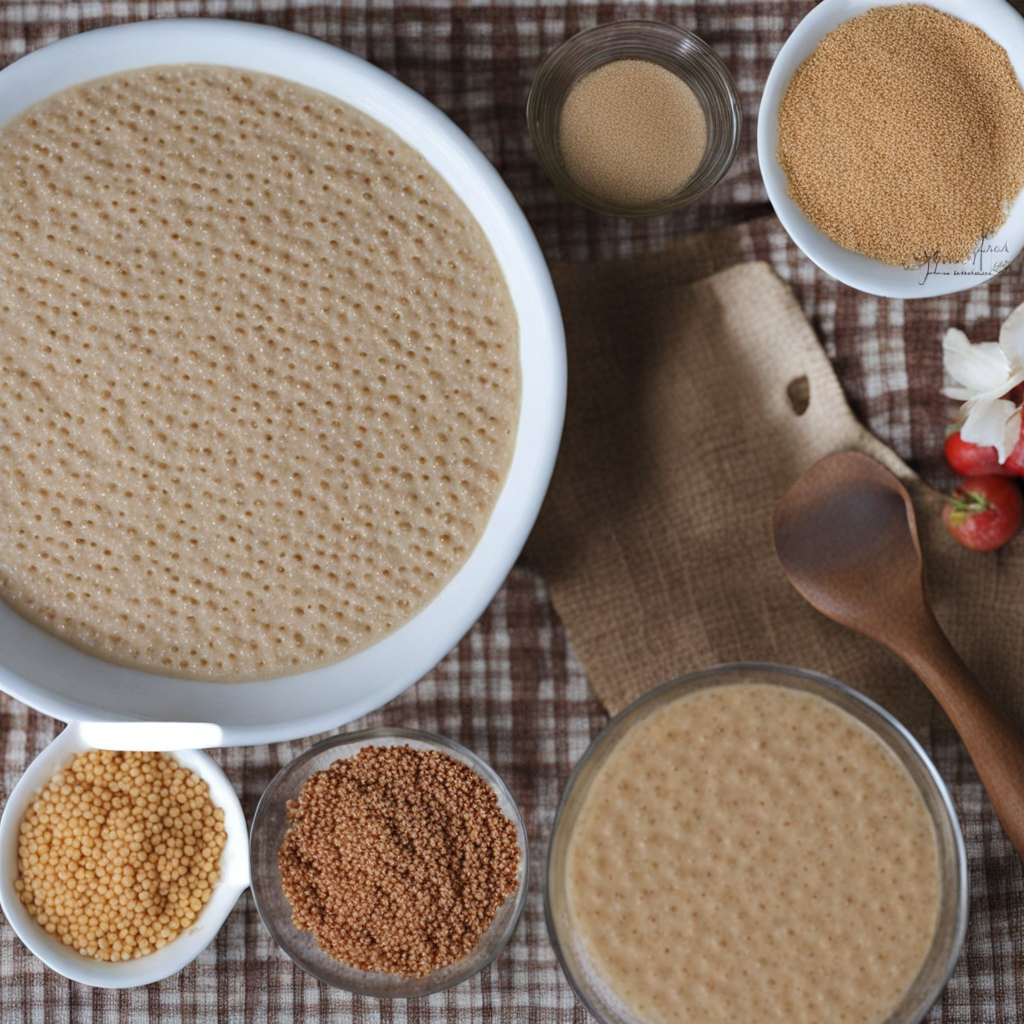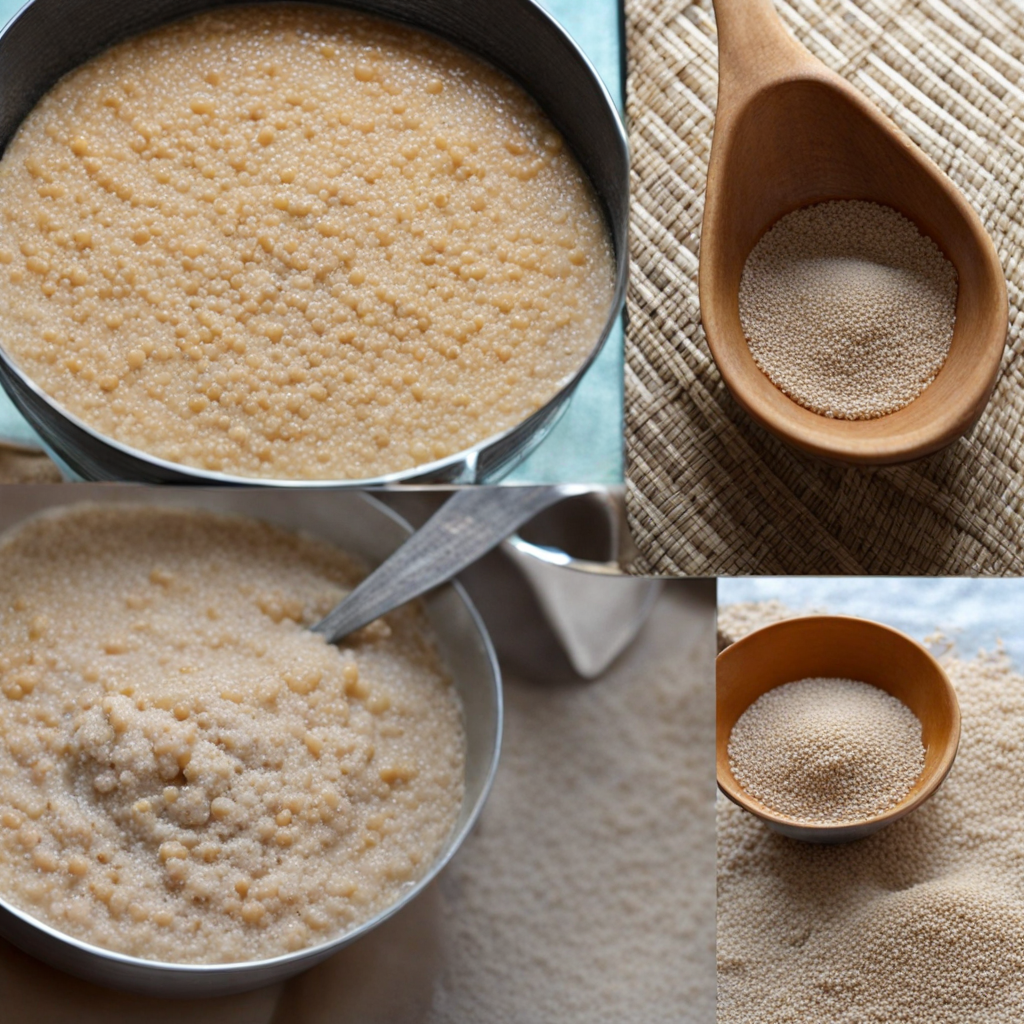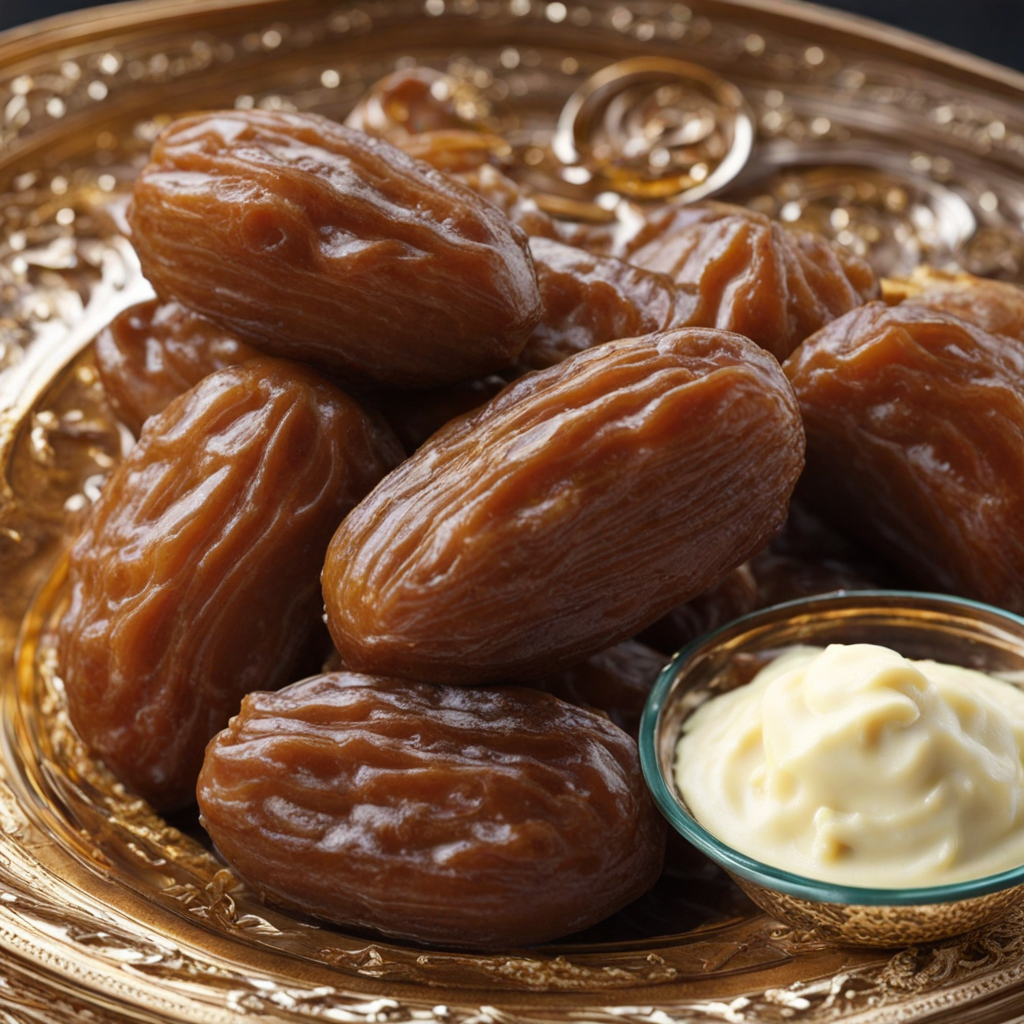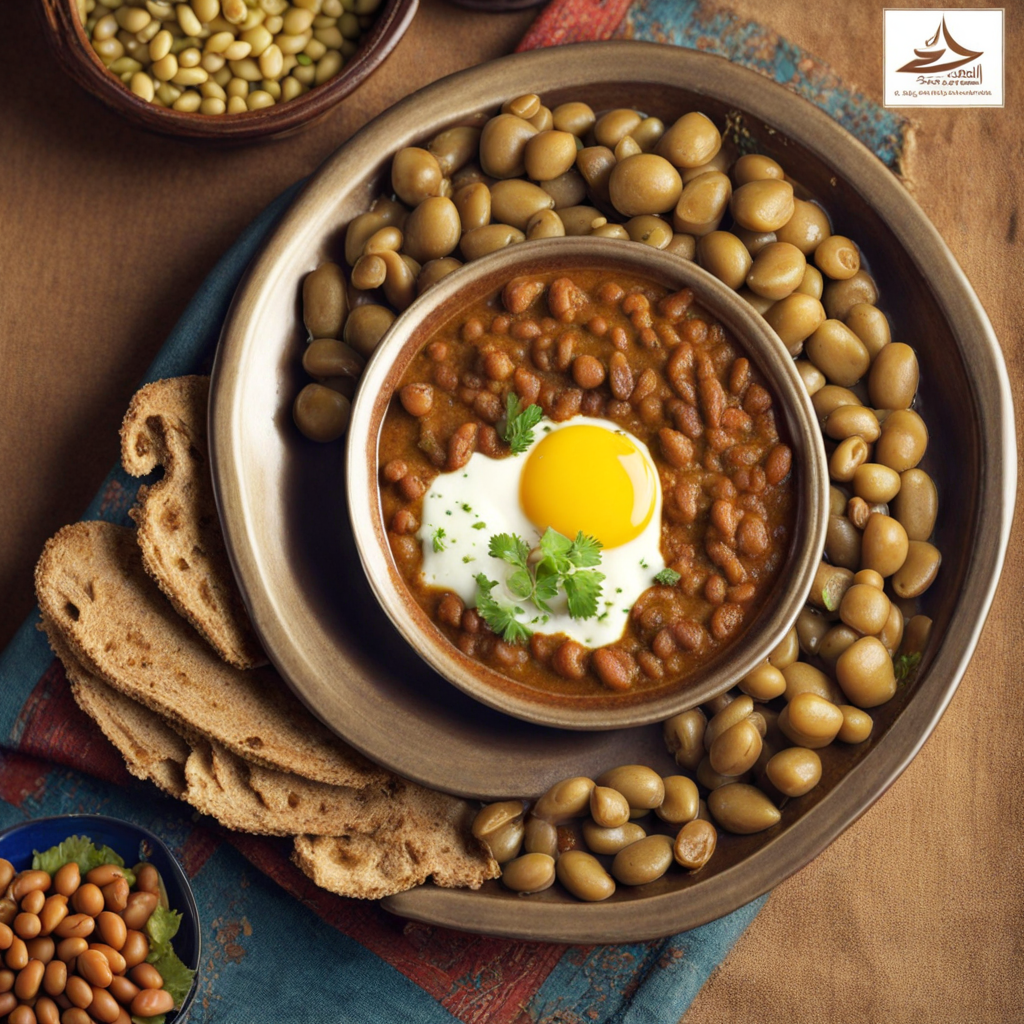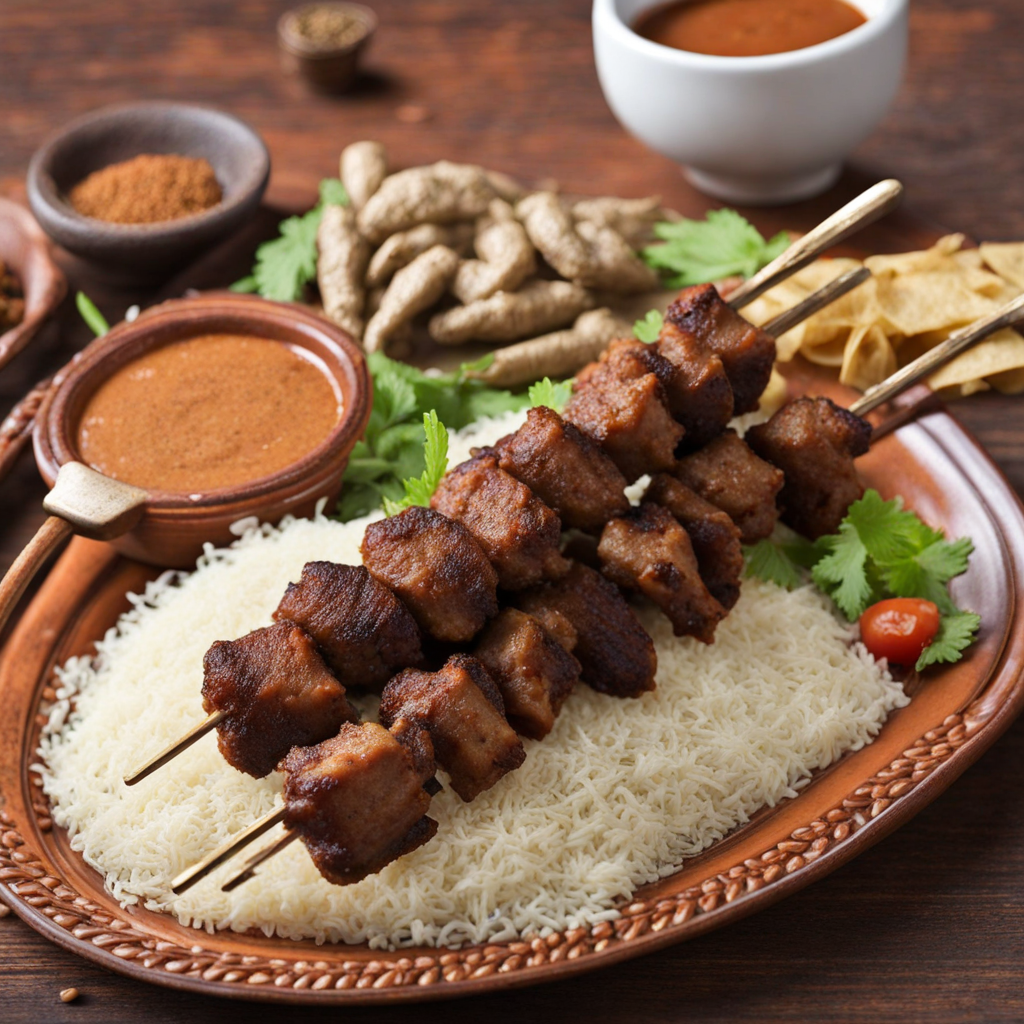Sorghum Porridge
Sorghum Porridge, a beloved dish in Sudan, is a warm and hearty staple made primarily from sorghum grains. This ancient grain is naturally gluten-free and packed with nutrients, making it not only delicious but also nourishing. The preparation typically involves soaking the sorghum overnight, followed by grinding it into a fine flour. Once combined with water, the mixture is cooked until it reaches a creamy, velvety consistency, reminiscent of oatmeal. The subtle, earthy flavor of sorghum shines through, providing a unique base that pairs well with various accompaniments. Traditionally, Sorghum Porridge is often enjoyed with a drizzle of honey or a sprinkle of sugar, enhancing its natural sweetness. In some regions, it is served alongside savory dishes, such as stews or grilled meats, allowing for a delightful contrast of flavors. The nutty undertones of the sorghum complement both sweet and savory elements, making it a versatile dish that can be tailored to individual tastes. The texture is comforting and filling, perfect for starting the day or as a cozy evening meal. In Sudanese culture, Sorghum Porridge is not just a meal; it's a communal experience often shared among family and friends. Its preparation and consumption foster a sense of togetherness, as people gather around to enjoy this nutritious food. As you explore Sorghum Porridge, you'll discover a taste that is both distinctive and heartwarming, reflecting the rich agricultural heritage of Sudan. This dish invites you to savor the simplicity and depth of flavors that come from one of the world's oldest grains.
How It Became This Dish
The History of عصيدة الذرة (Asida al-Dura) from Sudan Introduction عصيدة الذرة, known as Asida al-Dura, is a traditional Sudanese dish made primarily from cornmeal, water, and often served with a variety of sauces or stews. This simple yet nourishing food holds a significant place within Sudanese cuisine and culture, embodying both the agricultural heritage and the communal spirit of Sudanese society. Asida al-Dura is not merely a dish; it is a symbol of resilience, identity, and the rich tapestry of Sudan’s culinary history. Origins The origins of Asida al-Dura can be traced back to the agricultural practices of ancient Sudan, particularly in the regions where maize (corn) is cultivated. Maize was introduced to Africa from the Americas in the late 15th century, and it quickly became a staple crop due to its adaptability to various climatic conditions. The Sudanese embraced maize, and it soon became an integral part of the local diet, particularly in the southern and central regions of the country. The preparation of Asida is believed to have evolved from ancient cooking techniques. Traditionally, the dish involves boiling water and gradually adding cornmeal while stirring continuously to achieve a smooth, dough-like consistency. This technique is reminiscent of other historical dishes found across Africa and the Middle East, where grains are cooked to form a paste or porridge. Cultural Significance Asida al-Dura is more than just a meal; it is deeply intertwined with Sudanese culture and social life. The dish is often prepared for special occasions, such as weddings, religious celebrations, and family gatherings. It is a symbol of hospitality and generosity, reflecting the communal nature of Sudanese society. Sharing Asida with family and friends is a way of fostering bonds and creating a sense of unity. In many Sudanese households, the preparation of Asida is a communal affair, often involving multiple family members. This aspect of food preparation underscores the importance of family ties and collective effort in Sudanese culture. The act of gathering around a pot of Asida embodies the values of sharing, caring, and togetherness. Moreover, Asida al-Dura has a functional role in Sudanese society as a staple dish. It serves as a source of sustenance, providing calories and energy for those engaged in labor-intensive agricultural work. The simplicity of the dish allows it to be easily prepared and served in large quantities, making it suitable for feeding families and communities. Development Over Time Over the centuries, Asida al-Dura has evolved in response to various socio-economic and cultural changes within Sudan. The dish has adapted to incorporate local ingredients and flavors, reflecting the diverse culinary influences present in Sudan’s multicultural landscape. In addition to the classic preparation, variations exist that include the addition of spices, vegetables, or meat, depending on the region and availability of ingredients. The introduction of other grains, such as sorghum and millet, has also influenced the preparation of Asida. In some regions, these grains are combined with cornmeal or used as substitutes, leading to a variety of textures and flavors. The regional diversity of Sudan means that Asida can take on different names and forms, each with its unique characteristics. With the increasing urbanization of Sudanese society, the preparation and consumption of Asida have also adapted to modern lifestyles. In urban areas, pre-packaged cornmeal mixes have become popular, allowing for quicker preparation times. However, many families still prioritize traditional methods, passing down recipes and techniques from one generation to the next. Contemporary Significance In contemporary Sudan, Asida al-Dura remains a cherished dish that continues to serve as a connector of past and present. It is featured in cultural festivals and events, where it is often celebrated for its historical and cultural significance. The dish serves as a reminder of the resilience of the Sudanese people, particularly in times of conflict and hardship. The global interest in Sudanese cuisine has also brought Asida al-Dura into the spotlight. Chefs and food enthusiasts around the world are beginning to appreciate the unique flavors and cultural stories behind this traditional dish. This newfound recognition has led to a revival of interest in Sudanese culinary heritage, encouraging a younger generation to explore their roots and reconnect with traditional practices. Additionally, Asida al-Dura serves as a symbol of food security and sustainability. As a staple made from locally grown maize, it highlights the importance of indigenous crops in combating food insecurity and promoting self-sufficiency in Sudan. The dish encapsulates the principles of sustainable agriculture, relying on local resources and traditional farming practices. Conclusion Asida al-Dura is more than just a dish in Sudanese cuisine; it is a profound expression of cultural identity, communal bonds, and historical resilience. From its origins as a staple food for ancient agricultural societies to its contemporary role in fostering community and cultural pride, Asida embodies the rich heritage of Sudan. As the world increasingly turns its gaze towards diverse culinary traditions, Asida al-Dura stands out as a testament to the enduring power of food to connect people across generations and cultures. Its legacy continues to thrive, reminding us of the strength found in simplicity and the shared experiences that bring us together.
You may like
Discover local flavors from Sudan


